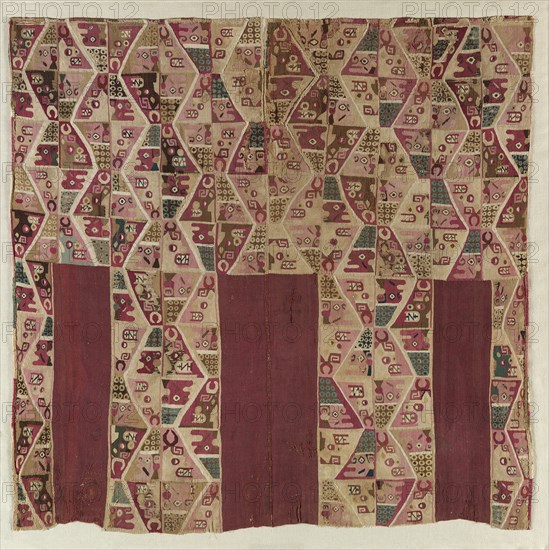
Sujet
Tunic, c. 700-1100. Creator: Unknown.
Légende
Tunic, c. 700-1100. Tunics made in the Huari-Tiahuanco style typically consist of two complete loom cloths folded in half with the warps running across the width of the tunic. The cloths are joined down the center with an opening left for the head and at the sides with arm holes left open at the shoulders. This means that the looms on which the cloths were woven were very wide (averaging about 80 inches), and that the warps were relatively short (only about 20 inches long). This unususal structure does not occur prior to the Huari-Tiahuanaco culture, but strongly influenced the construction of later Inca tunics. The formal designs of Huari-Tiahuanaco-style tunics consist of vertical columns, each ornamented with a repetition of one or two very abstract motifs, in this case a human head and an animal (bull?) head. Plain bands, such as the dark red bands seen here, vary in their length and width from one tunic to another. Very likely, such tunics were worn only by privileged persons, and their designs were determined by the rank and position of their owners.
Crédit
Photo12/Heritage Images/Heritage Art
Notre référence
HRM19G16_296
Model release
NA
Property release
NA
Licence
Droits gérés
Format disponible
32,9Mo (6,6Mo) / 28,7cm x 28,8cm / 3390 x 3396 (300dpi)